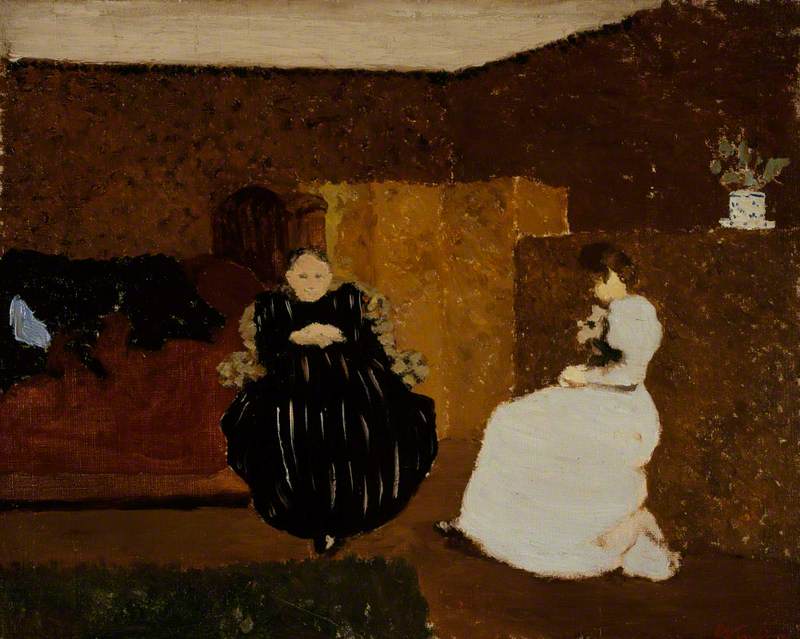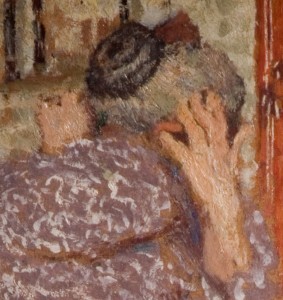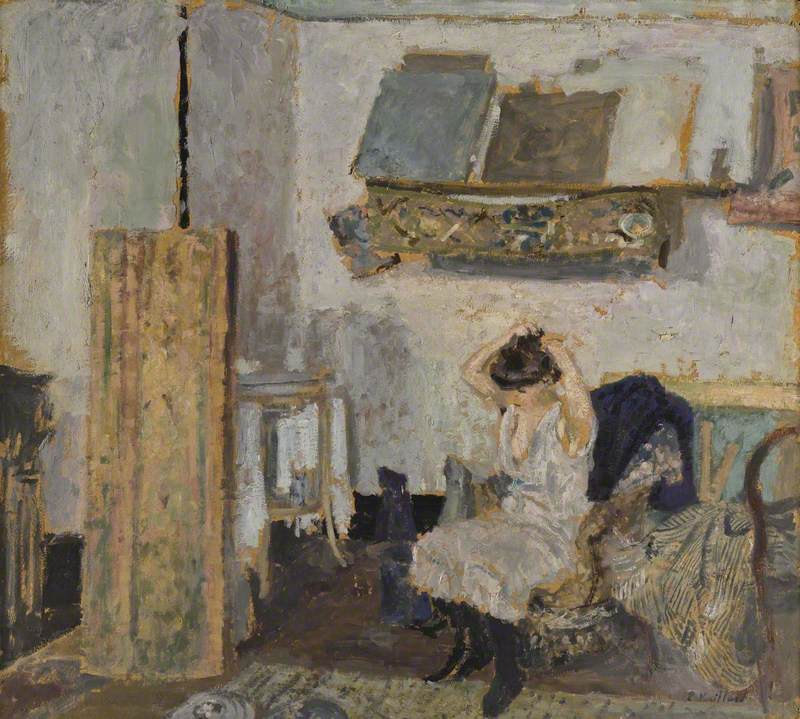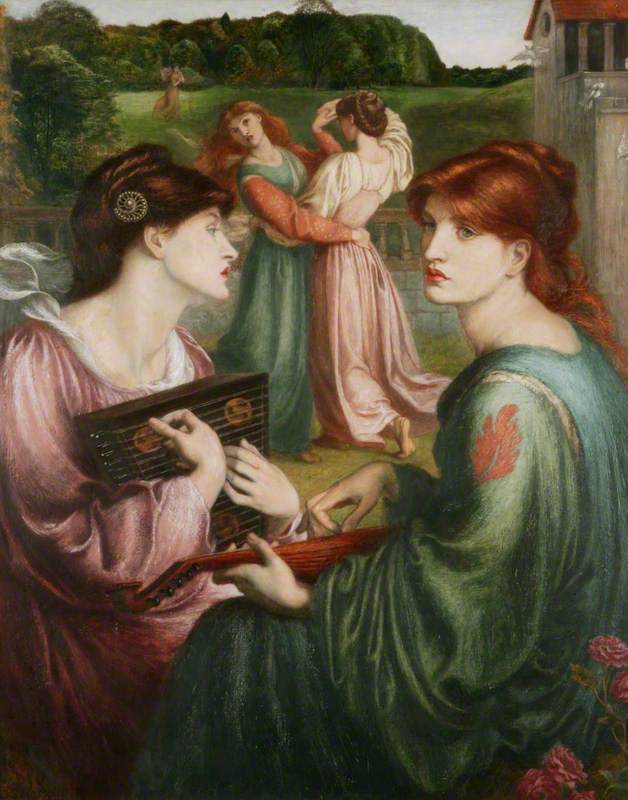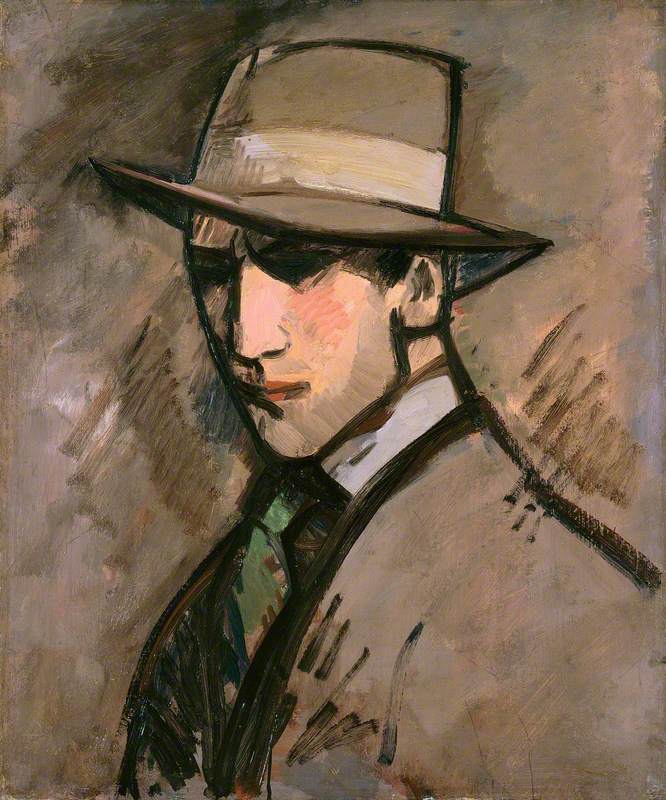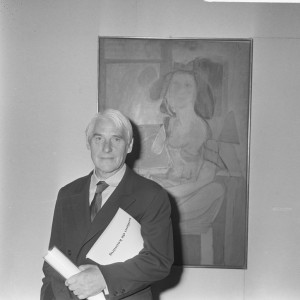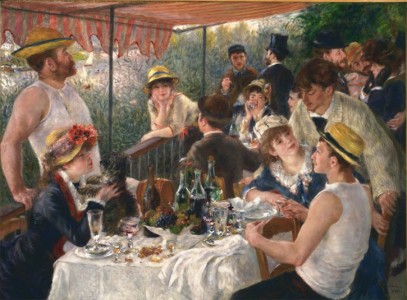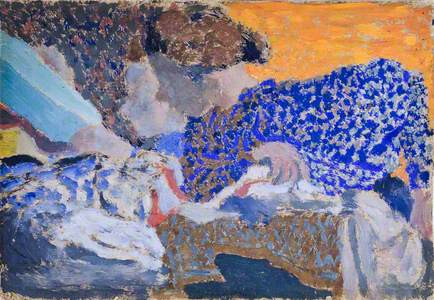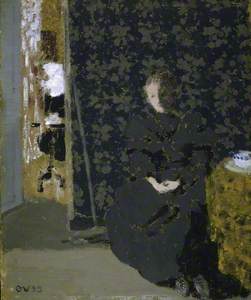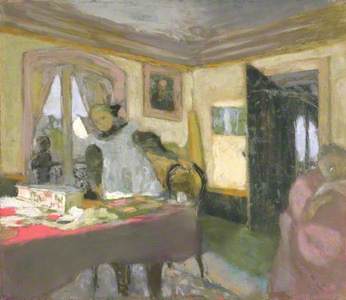Thirty-four of Vuillard’s paintings can be found in UK public collections. Several of these, together with lithographs and photographs, feature in The Barber Institute of Fine Art’s exhibition, the first dedicated exclusively to Vuillard’s portrayal of his mother, Madame Marie Vuillard (1839–1928). Here, the exhibition’s curator, Francesca Berry (University of Birmingham), selects five unmissable works by this intriguing French modernist who painted his mother no fewer than 500 times.
Deux ouvrières dans l'atelier de couture (Two Seamstresses in the Workroom)
1893
Édouard Vuillard (1868–1940) 
The title of this dazzling painting indicates just two figures. But Madame Vuillard is certainly a third figure dressed in yellow at left. The shadows and deep orange wall imply a scene lit artificially. Vuillard has depicted his mother and two young apprentices conducting night work in Madame Vuillard’s made-to-measure corsetry and dressmaking atelier, which she ran from the dining-room of their rue Saint-Honoré apartment at the heart of the Parisian garment industry. The painting operates in the immediate context of France’s November 1892 law which reduced women’s working day to eleven hours (ten hours for those aged thirteen to sixteen). Except, that was, for the sixty nights of additional work the law permitted at the height of the sewing season, and for family workshops such as Madame Vuillard’s, which were exempt entirely from the new legislation.
Vuillard’s sister Marie Roussel (1861–1948) is alone at a table, demonstrably posing for the painting, while Madame Vuillard, in a white blouse and black skirt, is just visible through an open door. Marie is poised between a cup of coffee and a broom momentarily leant against the internal wall. In taking time for herself away from housework, Marie has granted Vuillard time to work at painting his sister in natural light, which falls dramatically on one side of her face. But it nonetheless feels like a stolen moment and one in which Madame Vuillard’s authority as chef-patronne of the sewing workshop in which Marie was employed, and matriarch of the Vuillard household, is asserted with no less clarity despite her fragmentary presence.
Vuillard has painted his sister Marie in a white dress and corsage on her wedding day to his friend, and fellow Nabi artist, Ker-Xavier Roussel (1867–1944). Thus, the chat between mother and daughter in the latter’s bedroom is not just
Madame Vuillard Arranging Her Hair
1900
Édouard Vuillard (1868–1940) 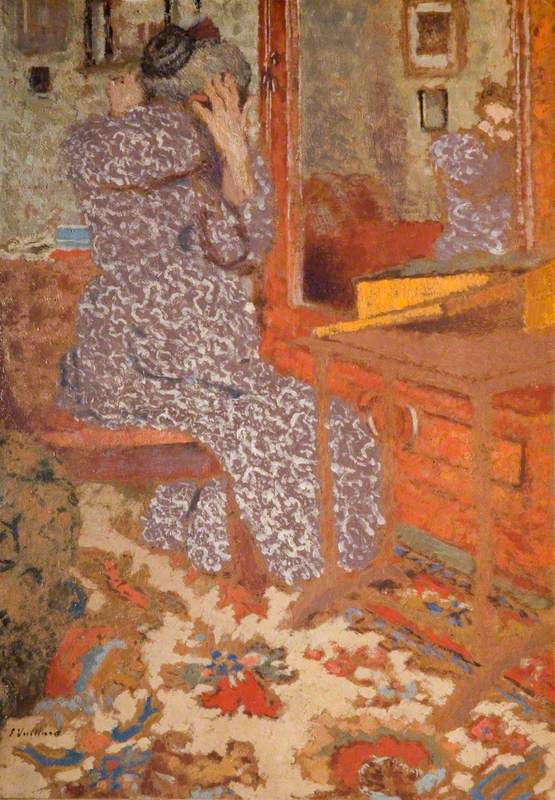
This intimate, yet
Few other items of furniture, except perhaps the sewing machine, are more personally affiliated in Vuillard’s art to his mother than this mirrored armoire. But it is The Barber Institute’s 1900 painting that is the first to give painterly form to the mirrored armoire and to Madame Vuillard’s reflection. For all its personal significance it is nonetheless likely that Vuillard derived inspiration for the composition from ukiyo-e Japanese woodblock prints (of which he was an avid collector) and Mary Cassatt’s 1890–1891 print depicting a semi-nude woman at a mirrored armoire: The Coiffure.
Offering a dramatically receding view into the Vuillards’ rue de Calais apartment, this pastel portrays Madame Vuillard intently reading a large book. Her rounded figure in a dusky pink housecoat anchors the scene, a contrast to the rising figure of her granddaughter Annette (b.1898), and the silhouette of her grandson Jacques (b.1901) hovering, perhaps melancholically, at the window. Félix Vallotton’s framed portrait of Vuillard, depicted at the compositional apex of the painting, enhances its tripartite intergenerational composition. Clearly occupants of the same room-space, each figure nonetheless is individually framed and contained within their own thoughts:
Francesca Berry, Senior Lecturer, Department of Art History, Curating and Visual Studies, University of Birmingham and exhibition curator of 'Maman: Vuillard and Madame Vuillard'
The exhibition 'Maman: Vuillard and Madame Vuillard' is on display at The Barber Institute of Fine Arts from 19th October 2018 to 20th January 2019.

